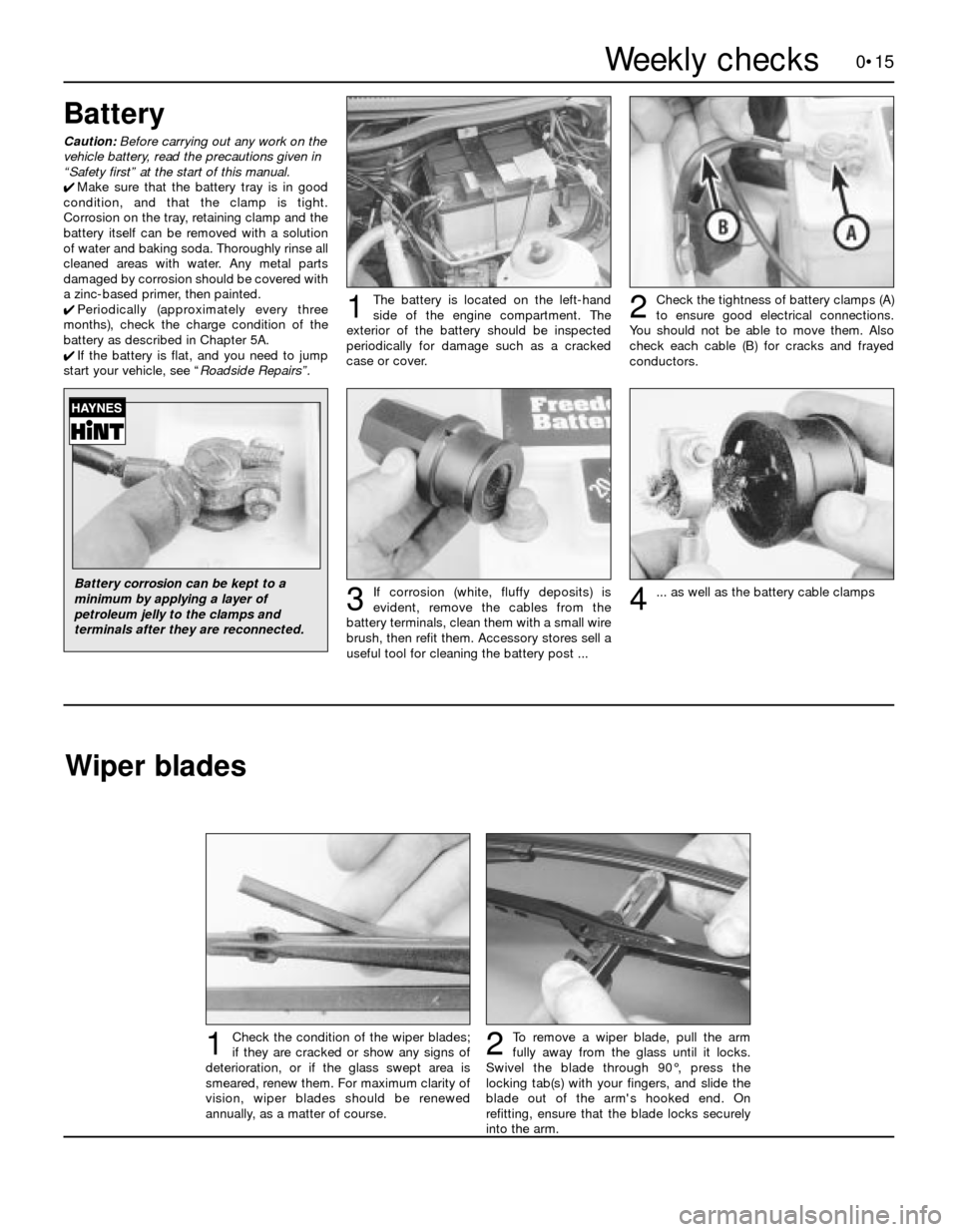0•15
To remove a wiper blade, pull the arm
fully away from the glass until it locks.
Swivel the blade through 90°, press the
locking tab(s) with your fingers, and slide the
blade out of the arm's hooked end. On
refitting, ensure that the blade locks securely
into the arm.Check the condition of the wiper blades;
if they are cracked or show any signs of
deterioration, or if the glass swept area is
smeared, renew them. For maximum clarity of
vision, wiper blades should be renewed
annually, as a matter of course.21Weekly checks
Battery
Caution:Before carrying out any work on the
vehicle battery, read the precautions given in
“Safety first” at the start of this manual.
4Make sure that the battery tray is in good
condition, and that the clamp is tight.
Corrosion on the tray, retaining clamp and the
battery itself can be removed with a solution
of water and baking soda. Thoroughly rinse all
cleaned areas with water. Any metal parts
damaged by corrosion should be covered with
a zinc-based primer, then painted.
4Periodically (approximately every three
months), check the charge condition of the
battery as described in Chapter 5A.
4If the battery is flat, and you need to jump
start your vehicle, see “Roadside Repairs”.The battery is located on the left-hand
side of the engine compartment. The
exterior of the battery should be inspected
periodically for damage such as a cracked
case or cover.
Check the tightness of battery clamps (A)
to ensure good electrical connections.
You should not be able to move them. Also
check each cable (B) for cracks and frayed
conductors.
If corrosion (white, fluffy deposits) is
evident, remove the cables from the
battery terminals, clean them with a small wire
brush, then refit them. Accessory stores sell a
useful tool for cleaning the battery post ...
12
3... as well as the battery cable clamps4
Battery corrosion can be kept to a
minimum by applying a layer of
petroleum jelly to the clamps and
terminals after they are reconnected.
Wiper blades
